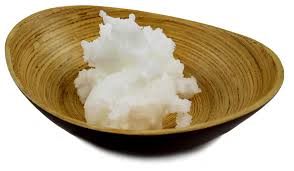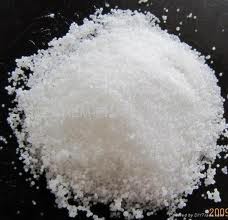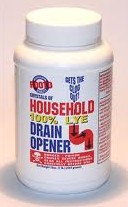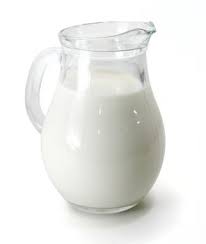Ingredients: Soap Saturdays
Welcome back to our 4th installment of our Soap Saturdays posts. This week we'll be talking about the different ingredients for making soap. When you make soap from scratch (cold process or hot process) you need 3 basic ingredients to produce soap.
You need:
- Fats or Oils
- Lye
- Liquid
Let's talk about these basic ingredients and the variety of choices you have.
 Fats or Oils
Fats or Oils
Fats are from animal sources, oils are plant based. There are lots and lots of fats and oils to choose from and experiment with. Each fat or oil is made up of different combinations of fatty acids and will therefore have its own unique property to add to the process of mixing the soap as well as in the finished product.
The fats or oils you choose will also play a part in how well your finished product will lather. Coconut oil, for instance, will lather even in salt water and produces big bubbles, while olive oil will produce very fine bubbles. I love the way Summer Bee Meadow lists a bunch of fats and oils and does a way better job than I can to tell you what they are for, and what kind of soap it will produce. I learned a lot from browsing their site, so go check it out and learn for yourself too!
Fats and oils are also given a SAP value. SAP is short for the word saponification, which basically "represents the number of milligrams of potassium hydroxide required to saponify 1g of fat under the conditions specified. It is a measure of the average molecular weight (or chain length) of all the fatty acids present." (Thanks Wikipedia!) You need to know that in making bar soaps, you'll need to use the NaOH value (for using sodium hydroxide). If you were going to make liquid soaps, you would use the KOH value (for using potassium hydroxide).
In makings soap, there's a lot of science behind it. That can be daunting for someone like me who doesn't understand a lick of it. But for others, it can be quite intriguing and open up a lot of fun possibilities in creating your own soap recipes. You don't need to learn the science part of it unless you want to improve a recipe or create your own recipe, so don't get discouraged and think that soap making is not for you if science isn't your strong point.
Lets get on with our other ingredients!
 Lye
Lye
 Lye is simply the catalyst for turning your ingredients into a bubbling skin sensation. There are two kinds of lye, so you need to know which one to use for making the soap you want to produce. To make bar soaps, you need sodium hydroxide (also called Caustic Soda). Sometimes it is called sodium hydroxide pearls or sodium hydroxide beads.
Lye is simply the catalyst for turning your ingredients into a bubbling skin sensation. There are two kinds of lye, so you need to know which one to use for making the soap you want to produce. To make bar soaps, you need sodium hydroxide (also called Caustic Soda). Sometimes it is called sodium hydroxide pearls or sodium hydroxide beads.
If you want to make liquid soaps, you use potassium hydroxide. Potassium hydroxide (sometimes called Caustic Potash Flakes) can come in a few different forms too, often in flakes, granules, or beads.
Occasionally you can find sodium hydroxide in your local hardware store in the drain cleaning section. NEVER use drain cleaner in the place of lye, as it contains other harsh chemicals that you do not want ending up on your skin. The sodium hydroxide I'm talking about will say 100% lye on the container, and is what you can use for soap making.
You can buy solutions of water and lye premixed as well. No matter which form of lye you will be using, always wear goggles and gloves to protect your eyes and hands!
 Liquid
Liquid
There are many forms of liquids that you can use to produce soaps, but not all liquids will be stable enough for the soap making process. Water and milk are common liquids, which you can use interchangeably in your recipe, as long as you use the properly called for amounts. There are many kinds of milk you can use (cow, goat, horse, sheep, human, pasteurized, raw, canned, powdered, etc.). If you use water, you'll want to use filtered water or distilled water for the right consistency with your recipe. Well water or city water can have pollutants or minerals that might change the consistency of your soap. Some people like to use rain water.
Using vegetable or fruit juices is generally not advised, same with using brewed coffee. It's not that you can't use these sources, but it won't be stable enough in the soap making process to produce anything significant.
So, there you have a brief description of the basic ingredients. We'll cover more of the fun ingredients in the future, so keep checking in with the blog to keep up with it all!
If you'd like to read up on the past Soap Saturday posts, you can see them here:
-Soap Saturdays: Beginning of a Soap Maker
-Soap Saturdays: Processes to Make Soap
-Soap Saturdays: Equipment





